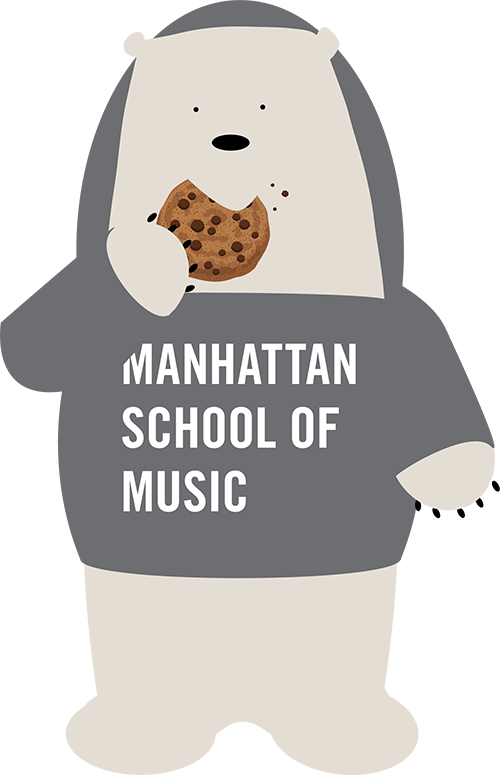
Please enjoy the following message from MSM Collaborative Piano faculty member and alumnus Myra Huang (MM’01).
Dear MSM Community,
The month of May is APIDA Heritage Month — APIDA is the acronym for “Asian Pacific Islander Desi American”; the term Desi represents those identifying as South Asian.
May is a time set aside for us to celebrate those who came before us who paved the way for the freedoms the Asian American community experiences today, as well as a time to reflect on how we can continue to celebrate our identities moving forward.
It is also a time to learn about the numerous cultures held within this identity. The APIDA community represents more than 60 countries and ethnic groups, and more than 100 languages. First declared in 1979 by President Jimmy Carter, the event was known then as “Asian/Pacific American Heritage Month” and lasted a week; in 1990 under President George Bush the celebration was extended to a month.
To learn more about the history of this proclamation here.
“My sincere hope is that more Asian composers will gain recognition and give voice to the kaleidoscopic range of what it means to be an Asian in this country.”
HISTORIC PRECEDENT
We are grateful to those who paved the way: the Japanese immigrants who first stepped on U.S. land on May 7, 1843; the Chinese immigrants who helped complete the transcontinental railroad in 1869, the first influx of Indian immigrants in the early 19th century who worked primarily in the agriculture, lumber, and the railroad industries. There were also the first Native Hawaiians who settled in mainland U.S. beginning in 1811, mainly as fur traders. However, the first record of the arrival of non-Hawaiian Pacific Islanders in the U.S. was not until 1910.
Though these groups of people and many more were steadily trickling into the U.S. in this time, it wasn’t until 1965 when the Immigration and Nationality Act was established that national-origin quotas were removed, paving the way for non-Europeans to immigrate freely to the U.S.
Every one of these individuals has fought hard for the right to become Americans, and now we honor them by celebrating our right to live vibrantly, freely, and courageously.

"Common Ground: The Heart of Community" is the name of this photo now in the Japanese American National Museum in Los Angeles. It depicts the first taking of the oath ceremony for Asians in Hilo, Hawaii, following the passing of the Walter McCarran Act which allowed Asians to apply for citizenship. Many in this image can be seen raising their right hand, taking the oath for US citizenship.
MY STORY
I remember growing up as an elementary school student in the Pacific Northwest, and being constantly asked if I was Chinese. I am Korean-American, and now I am assumed to be Chinese even more as an adult since I married a Taiwanese man and took his last name as my married name.
I was recently interviewed by the Korean Radio in NYC, and they did not even realize I was Korean until I told them. Of course, they were delighted to find out. It highlighted that unless I share who I am with others, I cannot expect them to learn more about me.
This leads me to my identity as a musician, specifically an Asian-American musician. What better way to share my identity with others than through my music? One of my frequent recital partners is mezzo-soprano Fleur Barron (MM ’08), and we have now done a few programs highlighting Asian American composers.
Having been born and raised in the U.S., presenting music by Asian composers gives me the opportunity to learn more about their heritage through their sound world and the poetry that they choose to set in their songs. And while my own experience of being a Korean born in the U.S. is uniquely different from an Asian who immigrated here, I still have a context and lens through which I can connect to these composers and the world they are painting through their music.

PERFORMING SONGS BY ASIAN COMPOSERS
In my current Collaborative Pianists’ and Singers’ Seminar class at MSM (co-taught with Professors Thomas Lausmann and Bryan Wagorn), we offer the opportunity for our singers and pianists to perform works of their choosing, and the Asian students often bring songs written by Asian composers.
It is an absolutely thrilling experience to witness our students performing in their first language — I must confess that the performances of these songs are some of my favorite of the evening. They tend to be emotionally powerful and incredibly moving with a whole new level of freedom of expression and connection to identity.
The performances are a powerful revelation of who these students really are. My sincere hope is that more Asian composers will gain recognition and give voice to the kaleidoscopic range of what it means to be an Asian in this country.
To celebrate this month, listen to a few great pieces, either composed by and/or performed by Asian Americans:
I celebrate the beautiful community of ADIPA students, faculty, and staff at Manhattan School of Music – I am proud to share our heritage with each of you.
Myra Huang (MM’01)
MSM Vocal Arts faculty; Collaborative Piano

